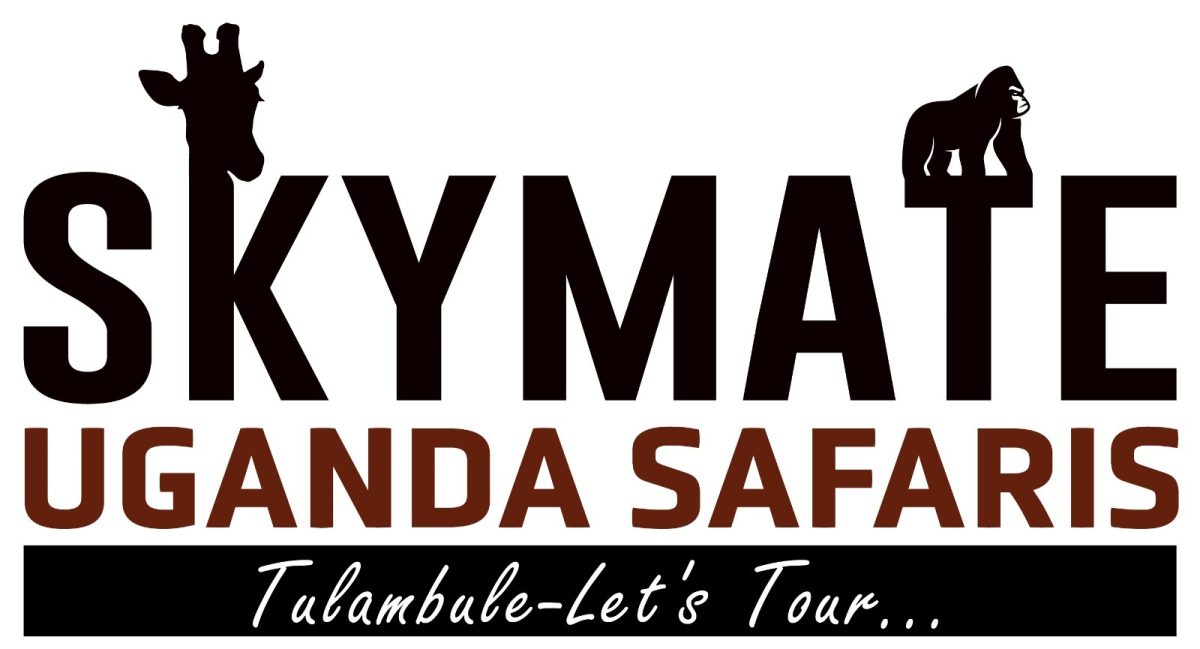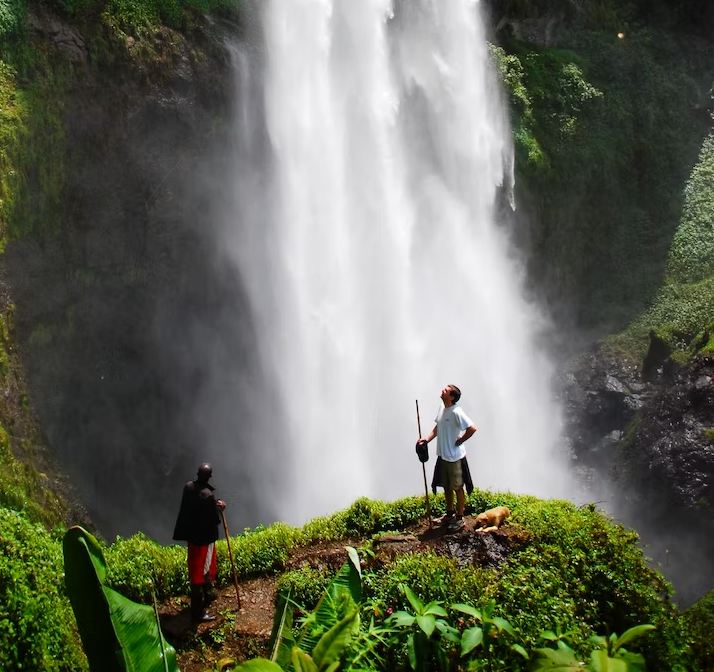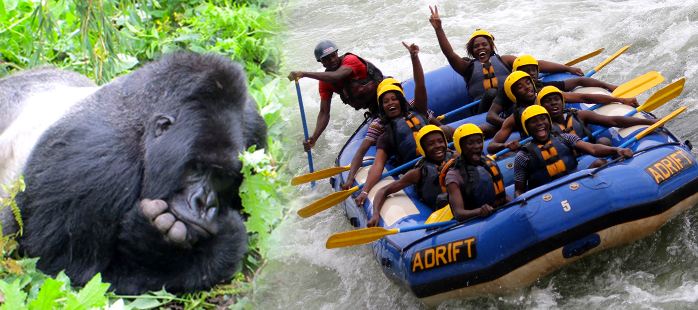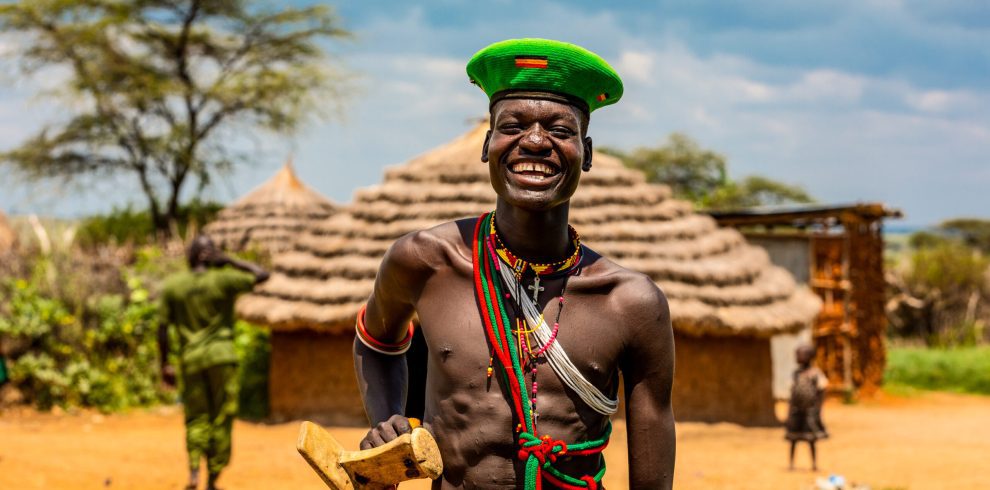Table of Contents
ToggleWhite Water Rafting On The Nile In Jinja, Uganda
Though most people visit Uganda for the chance to see rare mountain gorillas and other incredible wildlife, one other activity often ends up being a surprise highlight: white water rafting on the Nile River.
River Nile in Uganda offers some of the most thrilling and accessible Grade 5 whitewater rapids anywhere in the world. At about 6,700 km, the Nile is the longest river in the world.
It is also one of Africa’s 7 Natural Wonders, along with Mt Kilimanjaro, Ngorongoro Crater and Serengeti Mammal Migration in Tanzania, as well as Red Sea, Sahara Desert, and Okavango Delta. The Nile starts its journey at Lake Victoria, Africa’s largest lake in Uganda, and pounds its way over rapids and falls as it sweeps northwards across the African continent all the way to the Mediterranean in Egypt.
White-water rafting on the Nile River can be done in the lakeside town of Jinja. In fact, the whole experience of Nile River rafting can start or round out a safari in Uganda.
You can combine the awesomeness of hanging out with wild gorillas with the adrenaline of plunging down the longest river on Earth.
About The Jinja & The Nile
Jinja is located about 80km east of Kampala. The town is famed for being the source of the Nile River.
For thousands of years, River Nile was perhaps the world’s greatest mystery. Since the time of Julius Caesar, finding the source of the Nile had been considered the epitome of successful African exploration. Anyone can see where it ends, pouring northward through Egypt and into the Mediterranean Sea. But locating the origins of this mighty river puzzled nearly everybody.
After several years of searching, punctuated no doubt by run-ins with hostile locals and the occasional attack of one tropical disease or another, it was eventually – and controversially – claimed in 1858 by a man named John Hanning Speke at Jinja.
As the world celebrated Jinja’s significance as the source of the Nile, the people of Jinja continued to develop their livelihoods. And with the arrival of British colonial rule in 1906 and later the Indians, Jinja began to grow as a trading center.
And, after the arrival of hydroelectricity and the railroad, Jinja became the industrial capital of Uganda. However, between 1972 and 1979 during the turbulent regime of Idi Amin, Jinja started losing its position as Uganda’s Industrial hub. And when Idi Amin expelled all Asians in Uganda, the declining trend continued as the industries where deprived of the required expertise.
Even with the return of the Asians, Jinja has never recovered it position. Kampala has now overtaken it as Uganda’s industrial centre. However, all was not lost because while it lost its industrial status, tourism has thrived in Jinja.
This town and Uganda as a whole is a great place to experience the beauty of Africa. Besides the serenity of the town, the Nile and Lake Victoria attracts tourist there. And Jinja is a quiet town that is perfect for relaxation after exploring the national parks of Uganda.
It is also where adrenalin-junkies of all abilities come to enjoy white water kayaking, bungee-jumping, quad biking, horseback-riding, tubing, jet boating, mountain biking, and whitewater rafting on the Nile which is the subject of this article.
READ MORE: Best Things To Do In Jinja

What To Expect On A White Water Rafting Adventure On The Nile?
The chance to do rafting on the longest river on earth is amazing. It is one of the best water based safaris and top things to do in Uganda. In fact, White water rafting on the Nile in Jinja is considered to be amongst the best in the world, with routes full of variety, from quiet pools and forested islands to thunderous rapids and drops.
The Nile in Jinja includes several grade IV and V rapids to navigate, with evocative names such as Superhole, Hypoxia, Real Deal, Jaws, and Overtime.
There is typically the choice of a full or half day of rafting. A day of whitewater rafting commences with early breakfast before being transferred to the banks of the Nile.
You are required to leave your valuable and dry clothes in the car with staff. Your rafting group will be given orientation about safety and what to expect. The orientation is supervised by very experienced guides who are knowledgeable about the area and rapids.
Before you begin the activity, you are given an opportunity to choose between an easy or more difficult route. If you are not prepared for the Grade 4 and 5 rapids, you can opt for the Grade 3 rafting. You will be required to sign a form with details about any ailments. You cannot go for rafting with anemia or hypertension.
Once the briefing is done, helmets and waterproof jackets fastened, the actual activity can start. The first mile or so gives the guides more time to train you fully before the rapids get stronger and more spectacular downstream.
Whenever you reach the next rapid, the guides arrange for a vote of whether to go through the easy route (edges) or the hard way (middle). If the majority votes for the hard way, then there is nothing you can do but prepare for the challenge.
Experienced rafters are taken to the strongest section of currents to allow them tip over. The main rafting route features 9 main rapids, four of which are grade 5. The rapids become stronger and quicker as you go downstream. In-between the rapids are calm waters and islands were you can relax, swim, take lunch or marvel at the beautiful scenery.
A day of whitewater rafting on the Nile River in Jinja can cover a distance of about 26 kilometers. Expect to encounter local people fishing and drying their clothes by the riverside. The Nile River in Jinja is a great bird watching spot with more than 100 species.
If you are keen observers, you might even spot the Vervet monkeys swinging on top of trees along the bank of the river. After the adventure, a small party is organized where you are offered free drinks and transportation back at the lodge for relaxation or onward travel arrangements.
Is White Water Rafting In Jinja Safe?
Whitewater rafting on the Nile River in Jinja is safe because you will be rafting with highly trained guides, who know the river intimately. And the rafting companies used on organised tours have excellent safety records and use well maintained rafting equipment.
The river water is warm, which is a bonus, as you’ll definitely get wet and you’ll probably fall out, too. Grade V rapids can flip rafts over, sending you into the river, but lots of people enjoy this kind of immersive experience (yes, pun intended).
Safety kayakers will stay close to the raft at all times and can quickly paddle over to fetch you if you do fall in. There are no hippos on the stretch of the Nile where rafting takes place, and as crocodiles don’t like populated areas they are rarely seen, either – so you might fall in, but at least you won’t get eaten.
Wear plenty of sun protection when rafting, and anyone reliant on glasses should bring contact lenses if they have them.
If water rafting does not appeal, you can opt for an ice-cold drink on a leisurely sunset boat cruise, join a village walk, visiting a community project or just enjoying a mooch around Jinja to pick up some souvenirs and see the source of the Nile, at Coronation Park, marked by a garden and monument honoring British explorer John Hanning Speke.
Do You Need To Be An Experienced Rafter To Go White Water Rafting On The Nile?
Despite there being lots of long, tumultuous grade VI and grade V rapids, no experience in white-water rafting is required. For most people, this will be their first time white-water rafting.
The Nile River rafting is open to everyone. And if you are looking for a short weekend getaway from Kampala, you can visit Jinja to enjoy the scenery, the fresh air, and the spectacle.
Also, if you like the sound of just floating down the Nile, surrounded by lush forests and wildlife, but don’t want to be thrown around by the heavier rapids, then there are ‘mild’ routes that you can choose. These routes bypass the most extreme rapids, while still giving enough of a thrill.
There is also a ‘family float’ option for larger groups and families. These boats are larger, which makes them more robust against the waves, and these routes will also skip the most intense rapids.
Where To Stay After White Water Rafting On The Nile?
You can have a one day white-water rafting trip to Jinja and go back to your place of stay in Kampala or Entebbe. But if you have to stay an overnight in Jinja, the many hotels here including Jinja Nile Resort, The Haven Eco River Lodge, and 2 Friends Guesthouse Jinja
Downstream in the middle of the Nile River, there is Lemala Wildwaters Lodge, one of the finest luxury Uganda safari lodges. As the name suggests the lodge is owned and operated by Lemala, a company that provides comfortable accommodation in remote settings across Africa.
The lodge has 10 spacious suites that lie within six hectares of pristine riverine forest that make up a private island in the middle of the world’s longest river.
Each suite has a balcony with gorgeous views and an outdoor claw-foot tub for alfresco bathing – a perfect way to watch the sunset. Additionally, suites have queen-sized daybeds ideal for unwinding with a book from the lodge’s library, as well as hand basins carved from local pink granite.
Wild-water lodge assures a stress-free Uganda honeymoon whether you’re in your suite or out on the water. And there’s a superb suite for families on Uganda family safari holidays. It is a perfect place to relax at the end your long Uganda safari.

When To Go for White Water Rafting on The Nile River?
River Nile in Uganda is less affected by seasonal rains. This means you can do white-water rafting in Uganda year-round. Many prefer to visit Uganda during the drier months of late June to September and December to February, but travelling outside these months is also enjoyable if you’re not too fussed by a bit of rain. You can check out our guide on the best time to visit Uganda for more information.
More Important Information About White Water Rafting On The Nile In Jinja
- The cost of white water rafting ranges between $145 and $255 depending on if the activity is full day or half day.
- You do not need to worry about photos. The safety Kayakers and rafters carry equipment and a camera person to capture the moments. The photos can be bought stored on a CD at the finishing point at a cost of about $70 for each raft.
- You need extra clothes for use after rafting and money for extra expenses.
- Instead of the standard whitewater rafting, travelers can for choose to go Jet Boat riding. This involves taking a speed boat to race down the rapids of the Nile in Jinja. All participants are provided with life jackets and helmets. The Jet boats are manufactured from New Zealand and very experienced crew. Jet boat riding costs $75 for adults and $50 for kids under 12.
- Tubing the Nile is another exciting activity worth considering while visiting Jinja and the Nile River. This involves drifting on the Nile using an inflated tube while watching birds, sunbathing and marveling at the beautiful scenery around the Nile. The activity can be arranged on level/calm waters or close to the rapids.
- Whitewater rafting can be combined with other major activities like mountain gorilla trekking in Bwindi Impenetrable Forest, Chimpanzee trekking in Kibale Forest, Sip Falls hike, safari to Queen Elizabeth National Park or Murchison Falls National Park.







